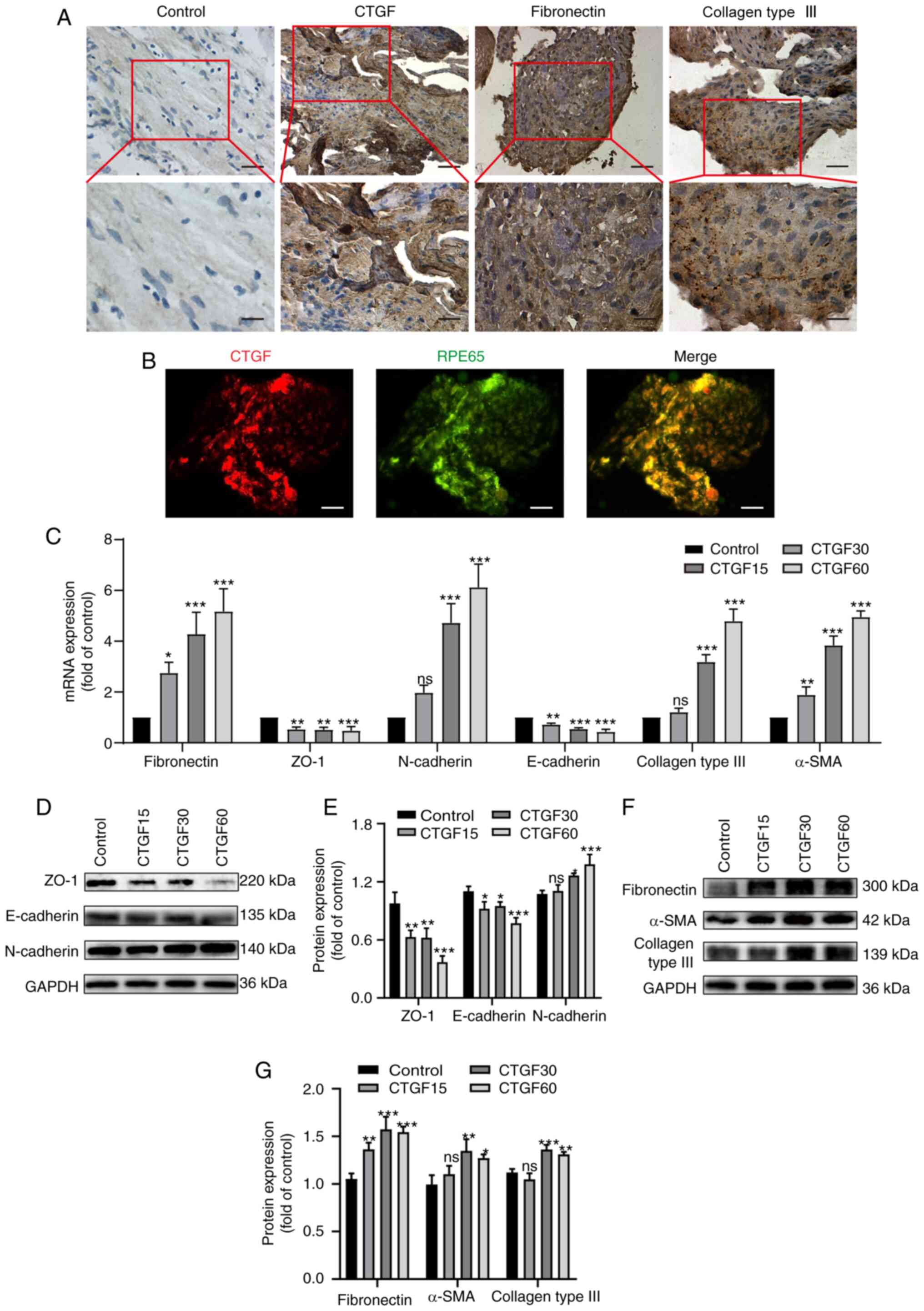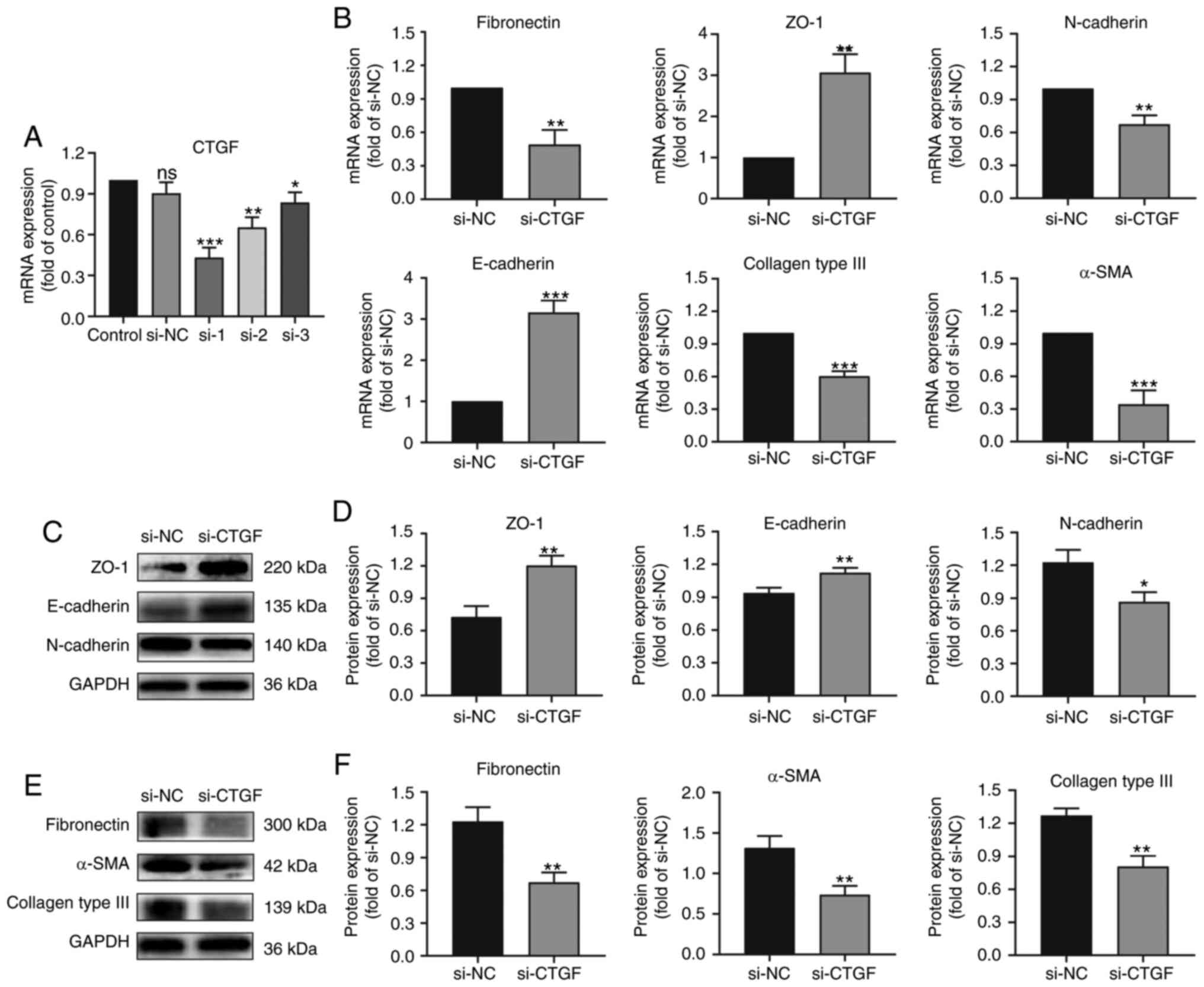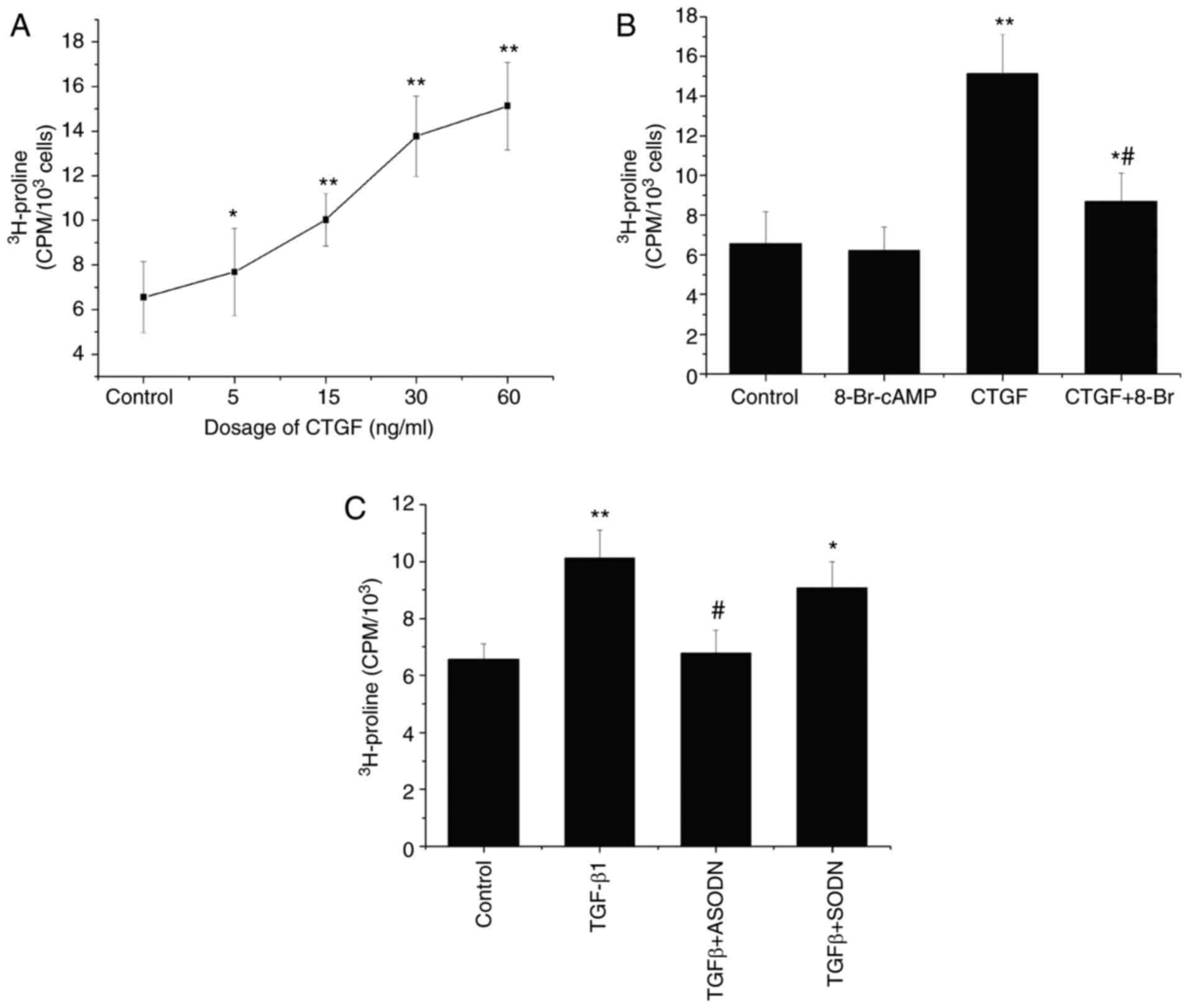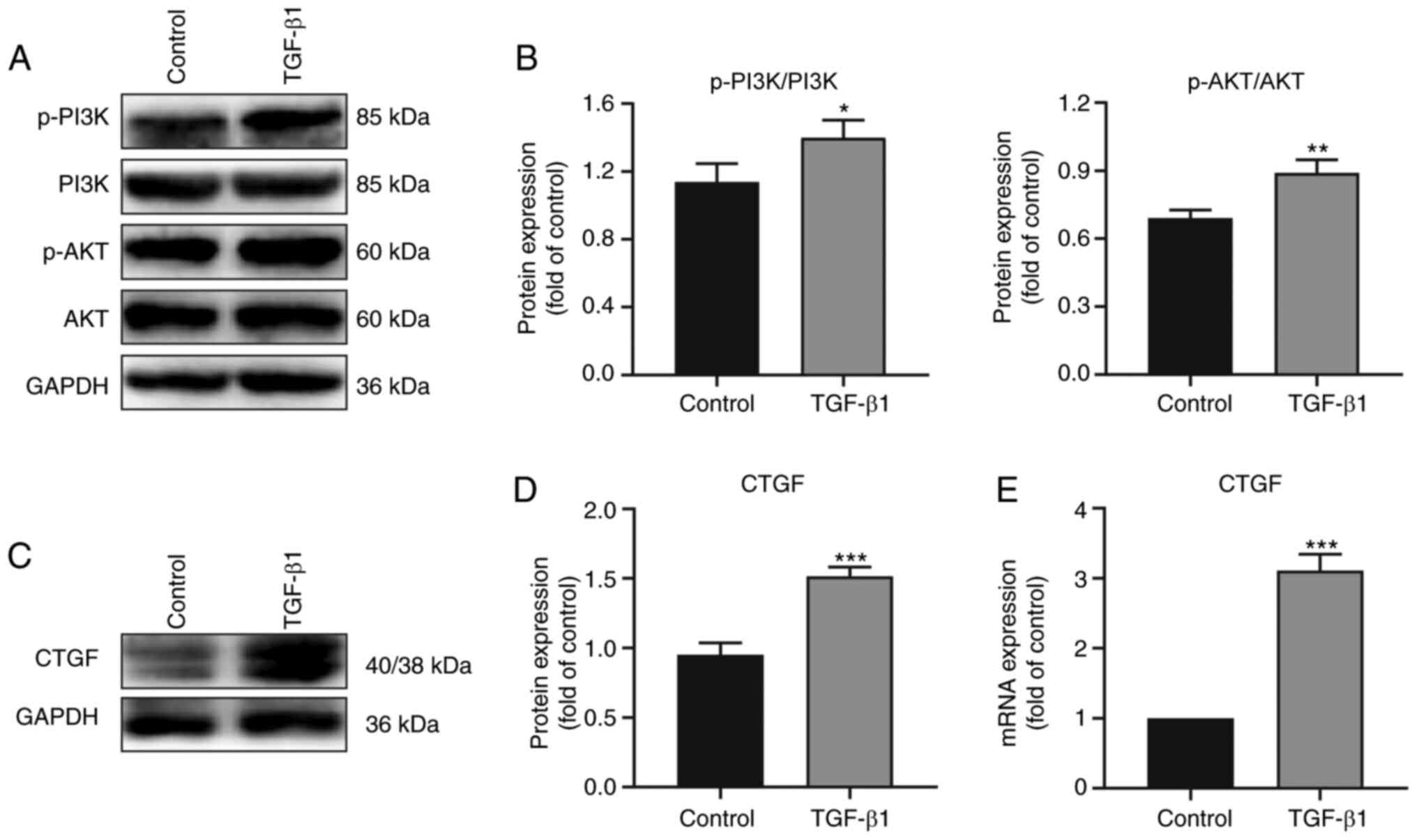|
1
|
Tosi GM, Marigliani D, Romeo N and Toti P:
Disease pathways in proliferative vitreoretinopathy: An ongoing
challenge. J Cell Physiol. 229:1577–1583. 2014. View Article : Google Scholar : PubMed/NCBI
|
|
2
|
Yang S, Li H, Li M and Wang F: Mechanisms
of epithelial-mesenchymal transition in proliferative
vitreoretinopathy. Discov Med. 20:207–217. 2015.PubMed/NCBI
|
|
3
|
Campochiaro PA: Pathogenic mechanisms in
proliferative vitreoretinopathy. Arch Ophthalmol. 115:237–241.
1997. View Article : Google Scholar : PubMed/NCBI
|
|
4
|
Abu El-Asrar AM, Van den Steen PE, Al-Amro
SA, Missotten L, Opdenakker G and Geboes K: Expression of
angiogenic and fibrogenic factors in proliferative vitreoretinal
disorders. Int Ophthalmol. 27:11–22. 2007. View Article : Google Scholar : PubMed/NCBI
|
|
5
|
Sethi CS, Lewis GP, Fisher SK, Leitner WP,
Mann DL, Luthert PJ and Charteris DG: Glial remodeling and neural
plasticity in human retinal detachment with proliferative
vitreoretinopathy. Invest Ophthalmol Vis Sci. 46:329–342. 2005.
View Article : Google Scholar : PubMed/NCBI
|
|
6
|
Kaneko H and Terasaki H: Biological
involvement of MicroRNAs in proliferative vitreoretinopathy. Transl
Vis Sci Technol. 6:52017. View Article : Google Scholar : PubMed/NCBI
|
|
7
|
Pastor JC: Proliferative
vitreoretinopathy: An overview. Surv Ophthalmol. 43:3–18. 1998.
View Article : Google Scholar : PubMed/NCBI
|
|
8
|
Lee SC, Kwon OW, Seong GJ, Kim SH, Ahn JE
and Kay ED: Epitheliomesenchymal transdifferentiation of cultured
RPE cells. Ophthalmic Res. 33:80–86. 2001. View Article : Google Scholar : PubMed/NCBI
|
|
9
|
Dvashi Z, Goldberg M, Adir O, Shapira M
and Pollack A: TGF-β1 induced transdifferentiation of rpe cells is
mediated by TAK1. PLoS One. 10:e01222292015. View Article : Google Scholar : PubMed/NCBI
|
|
10
|
Li M, Li H, Liu X, Xu D and Wang F:
MicroRNA-29b regulates TGF-β1-mediated epithelial-mesenchymal
transition of retinal pigment epithelial cells by targeting AKT2.
Exp Cell Res. 345:115–124. 2016. View Article : Google Scholar : PubMed/NCBI
|
|
11
|
Pennock S and Kazlauskas A: Vascular
endothelial growth factor A competitively inhibits platelet-derived
growth factor (PDGF)-dependent activation of PDGF receptor and
subsequent signaling events and cellular responses. Mol Cell Biol.
32:1955–1966. 2012. View Article : Google Scholar : PubMed/NCBI
|
|
12
|
Umazume K, Barak Y, McDonald K, Liu L,
Kaplan HJ and Tamiya S: Proliferative vitreoretinopathy in the
Swine-a new model. Invest Ophthalmol Vis Sci. 53:4910–4916. 2012.
View Article : Google Scholar : PubMed/NCBI
|
|
13
|
Cui JZ, Chiu A, Maberley D, Ma P, Samad A
and Matsubara JA: Stage specificity of novel growth factor
expression during development of proliferative vitreoretinopathy.
Eye (Lond). 21:200–208. 2007. View Article : Google Scholar : PubMed/NCBI
|
|
14
|
Ciprian D: The pathogeny of proliferative
vitreoretinopathy. Rom J Ophthalmol. 59:88–92. 2015.PubMed/NCBI
|
|
15
|
Platania CBM, Fisichella V, Fidilio A,
Geraci F, Lazzara F, Leggio GM, Salomone S, Drago F, Pignatello R,
Caraci F and Bucolo C: Topical ocular delivery of TGF-β1 to the
back of the eye: Implications in age-related neurodegenerative
diseases. Int J Mol Sci. 18:20762017. View Article : Google Scholar
|
|
16
|
Fisichella V, Giurdanella G, Platania CB,
Romano GL, Leggio GM, Salomone S, Drago F, Caraci F and Bucolo C:
TGF-β1 prevents rat retinal insult induced by amyloid-β (1–42)
oligomers. Eur J Pharmacol. 787:72–77. 2016. View Article : Google Scholar : PubMed/NCBIPubMed/NCBI
|
|
17
|
Zhu J, Nguyen D, Ouyang H, Zhang XH, Chen
XM and Zhang K: Inhibition of RhoA/Rho-kinase pathway suppresses
the expression of extracellular matrix induced by CTGF or TGF-beta
in ARPE-19. Int J Ophthalmol. 6:8–14. 2013.PubMed/NCBI
|
|
18
|
He S, Chen Y, Khankan R, Barron E, Burton
R, Zhu D, Ryan SJ, Oliver N and Hinton DR: Connective tissue growth
factor as a mediator of intraocular fibrosis. Invest Ophthalmol Vis
Sci. 49:4078–4088. 2008. View Article : Google Scholar : PubMed/NCBI
|
|
19
|
Guo CM, Wang YS, Hu D, Han QH, Wang JB,
Hou X and Hui YN: Modulation of migration and Ca2+
signaling in retinal pigment epithelium cells by recombinant human
CTGF. Curr Eye Res. 34:852–862. 2009. View Article : Google Scholar : PubMed/NCBI
|
|
20
|
Khankan R, Oliver N, He S, Ryan SJ and
Hinton DR: Regulation of fibronectin-EDA through CTGF
domain-specific interactions with TGFbeta2 and its receptor
TGFβRII. Invest Ophthalmol Vis Sci. 52:5068–5078. 2011. View Article : Google Scholar : PubMed/NCBI
|
|
21
|
Bradham DM, Igarashi A, Potter RL and
Grotendorst GR: Connective tissue growth factor: A cysteine-rich
mitogen secreted by human vascular endothelial cells is related to
the SRC-induced immediate early gene product CEF-10. J Cell Biol.
114:1285–1294. 1991. View Article : Google Scholar : PubMed/NCBI
|
|
22
|
Blom IE, Goldschmeding R and Leask A: Gene
regulation of connective tissue growth factor: New targets for
antifibrotic therapy? Matrix Biol. 21:473–482. 2002. View Article : Google Scholar : PubMed/NCBI
|
|
23
|
Moussad EE and Brigstock DR: Connective
tissue growth factor: What's in a name? Mol Genet Metab.
71:276–292. 2000. View Article : Google Scholar : PubMed/NCBI
|
|
24
|
Hilton G, Machemer R, Michels R, Okun E,
Schepens C and Schwartz A: The classification of retinal detachment
with proliferative vitreoretinopathy. Ophthalmology. 90:121–125.
1983. View Article : Google Scholar : PubMed/NCBI
|
|
25
|
Dunn KC, Aotaki-Keen AE, Putkey FR and
Hjelmeland LM: ARPE-19, a human retinal pigment epithelial cell
line with differentiated properties. Exp Eye Res. 62:155–169. 1996.
View Article : Google Scholar : PubMed/NCBI
|
|
26
|
Livak KJ and Schmittgen TD: Analysis of
relative gene expression data using real-time quantitative PCR and
the 2(-Delta Delta C(T)) method. Methods. 25:402–408. 2001.
View Article : Google Scholar : PubMed/NCBI
|
|
27
|
Duncan MR, Frazier KS, Abramson S,
Williams S, Klapper H, Huang X and Grotendorst GR: Connective
tissue growth factor mediates transforming growth factor
beta-induced collagen synthesis: Down-regulation by cAMP. FASEB J.
13:1774–1786. 1999. View Article : Google Scholar : PubMed/NCBI
|
|
28
|
Kothapalli D, Hayashi N and Grotendorst
GR: Inhibition of TGF-beta-stimulated CTGF gene expression and
anchorage-independent growth by cAMP identifies a CTGF-dependent
restriction point in the cell cycle. FASEB J. 12:1151–1161. 1998.
View Article : Google Scholar : PubMed/NCBI
|
|
29
|
Scherer LJ and Rossi JJ: Approaches for
the sequence-specific knockdown of mRNA. Nat Biotechnol.
21:1457–1465. 2003. View
Article : Google Scholar : PubMed/NCBI
|
|
30
|
Hishikawa K, Oemar BS, Tanner FC, Nakaki
T, Lüscher TF and Fujii T: Connective tissue growth factor induces
apoptosis in human breast cancer cell line MCF-7. J Biol Chem.
274:37461–37466. 1999. View Article : Google Scholar : PubMed/NCBI
|
|
31
|
Daniels JT, Schultz GS, Blalock TD,
Garrett Q, Grotendorst GR, Dean NM and Khaw PT: Mediation of
transforming growth factor-beta(1)-stimulated matrix contraction by
fibroblasts: A role for connective tissue growth factor in
contractile scarring. Am J Pathol. 163:2043–2052. 2003. View Article : Google Scholar : PubMed/NCBI
|
|
32
|
Davis JT and Foster WJ: Substrate
stiffness influences the time dependence of CTGF protein expression
in muller cells. Int Physiol J. 1:12018. View Article : Google Scholar : PubMed/NCBI
|
|
33
|
Meyer P, Wunderlich K, Kain HL, Prunte C
and Flammer J: Human connective tissue growth factor mRNA
expression of epiretinal and subretinal fibrovascular membranes: A
report of three cases. Ophthalmologica. 216:284–291. 2002.
View Article : Google Scholar : PubMed/NCBI
|
|
34
|
Hinton DR, He S, Jin ML, Barron E and Ryan
SJ: Novel growth factors involved in the pathogenesis of
proliferative vitreoretinopathy. Eye (Lond). 16:422–428. 2002.
View Article : Google Scholar : PubMed/NCBI
|
|
35
|
Takayama K, Kaneko H, Hwang SJ, Ye F,
Higuchi A, Tsunekawa T, Matsuura T, Iwase T, Asami T, Ito Y, et al:
Increased ocular levels of microRNA-148a in cases of retinal
detachment promote epithelial-mesenchymal transition. Invest
Ophthalmol Vis Sci. 57:2699–2705. 2016. View Article : Google Scholar : PubMed/NCBI
|
|
36
|
Lamouille S, Xu J and Derynck R: Molecular
mechanisms of epithelial-mesenchymal transition. Nat Rev Mol Cell
Biol. 15:178–196. 2014. View Article : Google Scholar : PubMed/NCBI
|
|
37
|
Tam WL and Weinberg RA: The epigenetics of
epithelial-mesenchymal plasticity in cancer. Nat Med. 19:1438–1449.
2013. View Article : Google Scholar : PubMed/NCBI
|
|
38
|
Gonzalez DM and Medici D: Signaling
mechanisms of the epithelial-mesenchymal transition. Sci Signal.
7:re82014. View Article : Google Scholar : PubMed/NCBI
|
|
39
|
Thiery JP, Acloque H, Huang RY and Nieto
MA: Epithelial-mesenchymal transitions in development and disease.
Cell. 139:871–890. 2009. View Article : Google Scholar : PubMed/NCBI
|
|
40
|
Theocharis AD, Manou D and Karamanos NK:
The extracellular matrix as a multitasking player in disease. FEBS
J. 286:2830–2869. 2019. View Article : Google Scholar : PubMed/NCBI
|
|
41
|
Polanco TO, Xylas J and Lantis JC II:
Extracellular matrices (ECM) for tissue repair. Surg Technol Int.
28:43–57. 2016.PubMed/NCBI
|
|
42
|
Miller CG, Budoff G, Prenner JL and
Schwarzbauer JE: Minireview: Fibronectin in retinal disease. Exp
Biol Med (Maywood). 242:1–7. 2017.
|
|
43
|
Morino I, Hiscott P, McKechnie N and
Grierson I: Variation in epiretinal membrane components with
clinical duration of the proliferative tissue. Br J Ophthalmol.
74:393–399. 1990. View Article : Google Scholar : PubMed/NCBI
|
|
44
|
Priglinger SG, Alge CS, Kreutzer TC,
Neubauer AS, Haritoglou C, Kampik A and Welge-Luessen U:
Keratinocyte transglutaminase in proliferative vitreoretinopathy.
Invest Ophthalmol Vis Sci. 47:4990–4997. 2006. View Article : Google Scholar : PubMed/NCBI
|
|
45
|
Kita T, Hata Y, Miura M, Kawahara S, Nakao
S and Ishibashi T: Functional characteristics of connective tissue
growth factor on vitreoretinal cells. Diabetes. 56:1421–1428. 2007.
View Article : Google Scholar : PubMed/NCBI
|
|
46
|
Zhao X, Zhang LK, Zhang CY, Zeng XJ, Yan
H, Jin HF, Tang CS and Du JB: Regulatory effect of hydrogen sulfide
on vascular collagen content in spontaneously hypertensive rats.
Hypertens Res. 31:1619–1630. 2008. View Article : Google Scholar : PubMed/NCBI
|
|
47
|
Jia P, Hu Y, Li G, Sun Y, Zhao J, Fu J, Lu
C and Liu B: Roles of the ERK1/2 and PI3K/PKB signaling pathways in
regulating the expression of extracellular matrix genes in rat
pulmonary artery smooth muscle cells. Acta Cir Bras. 32:350–358.
2017. View Article : Google Scholar : PubMed/NCBI
|
|
48
|
Chen XF, Du M, Wang XH and Yan H: Effect
of etanercept on post-traumatic proliferative vitreoretinopathy.
Int J Ophthalmol. 12:731–738. 2019.PubMed/NCBI
|
|
49
|
Abu El-Asrar AM, Imtiaz Nawaz M, Kangave
D, Siddiquei MM and Geboes K: Osteopontin and other regulators of
angiogenesis and fibrogenesis in the vitreous from patients with
proliferative vitreoretinal disorders. Mediators Inflamm.
2012:4930432012. View Article : Google Scholar : PubMed/NCBI
|
|
50
|
Gamulescu MA, Chen Y, He S, Spee C, Jin M,
Ryan SJ and Hinton DR: Transforming growth factor beta2-induced
myofibroblastic differentiation of human retinal pigment epithelial
cells: Regulation by extracellular matrix proteins and hepatocyte
growth factor. Exp Eye Res. 83:212–222. 2006. View Article : Google Scholar : PubMed/NCBI
|
|
51
|
Yamanaka O, Saika S, Ikeda K, Miyazaki K,
Kitano A and Ohnishi Y: Connective tissue growth factor modulates
extracellular matrix production in human subconjunctival
fibroblasts and their proliferation and migration in vitro. Jpn J
Ophthalmol. 52:8–15. 2008. View Article : Google Scholar : PubMed/NCBI
|
|
52
|
Derynck R and Budi EH: Specificity,
versatility, and control of TGF-β family signaling. Sci Signal.
12:eaav51832019. View Article : Google Scholar : PubMed/NCBI
|
|
53
|
Gressner OA, Lahme B, Siluschek M, Rehbein
K, Weiskirchen R and Gressner AM: Connective tissue growth factor
is a Smad2 regulated amplifier of transforming growth factor beta
actions in hepatocytes-but without modulating bone morphogenetic
protein 7 signaling. Hepatology. 49:2021–2030. 2009. View Article : Google Scholar : PubMed/NCBI
|
|
54
|
Usui-Ouchi A, Ouchi Y, Kiyokawa M, Sakuma
T, Ito R and Ebihara N: Upregulation of Mir-21 levels in the
vitreous humor is associated with development of proliferative
vitreoretinal disease. PLoS One. 11:e01580432016. View Article : Google Scholar : PubMed/NCBI
|
|
55
|
Chen X, Ye S, Xiao W, Luo L and Liu Y:
Differentially expressed microRNAs in TGFβ2-induced
epithelial-mesenchymal transition in retinal pigment epithelium
cells. Int J Mol Med. 33:1195–1200. 2014. View Article : Google Scholar : PubMed/NCBI
|




















